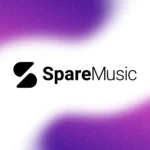1. The top global payment methods for your business include:
- Visa, Mastercard, American Express
- PayPal
- TransferWise, Payoneer, Trolley
- Wire transfer
- International ACH
- Direct debit
- JCB card
- Maestro card
- Interac e-Transfer
Whether you’re an online marketplace looking to pay your sub-merchants, or you’re trying to pick the easiest way to get paid yourself, finding a suitable global payment method can make your life simpler. The choice can be daunting, with at least ten options to choose from that are offered on most enterprise-class payout platforms. Here are the most popular methods and their benefits to help you make the right choice
2. Most Popular Types of Electronic Payment
US Domestic ACH
The Automated Clearing House is a network that handles large batches of debit and credit transactions. Most enterprises and government agencies use this method partly because of its ability to handle many payments at once from various sources. As technology makes access to ACH cheaper and more accessible, small business owners are increasingly turning to this method to help employees and suppliers get their money and minimize hassles. If your business sends payments to many suppliers, ACH is the right choice for you.
Global or International ACH
Domestic payees have the same benefits: an efficient payout method for global suppliers, affiliates, publishers, and developers. Global ACH, or International ACH, provides electronic funds transfers to dozens of countries, making payments in the payee’s local currency.
PayPal
Sometimes called an e-wallet, PayPal is used for payments both domestically and internationally. Once registered, users only have to provide an email address to receive money. This keeps bank information confidential, and users can choose to transfer the funds to a bank account or keep it in their Paypal account for their payments. This option can be a good choice for business owners who work with many employees and freelancers and have customers concerned about giving out financial information.
Confused about the difference between PayPal payments and bank transfers? We unpack it here.
Wire Transfer
This is the simplest payment method because it requires no intermediary to handle the transfer. Wire transfers work best for businesses making multiple payments each month to numerous countries. Local regulations require wire transfers to include many bits of information; therefore, a mass-payout provider can best serve the payer’s use of wire transfers.
3. Switching from Paper Checks to Electronic Transfers
Whether you run a small influencer network, or an active online translation service, offering your contractors many global payment methods is a significant competitive advantage. Your international payees will love the ability to receive their money on time, in their local currency, in their preferred payment method. Manually managing these payments can be a challenge for any business, but working with the right payout platform makes the job easier. Offering payment methods ranging from PayPal to global ACH to wire transfers allows your suppliers to choose the option that best suits their needs. Offering a wealth of cross-border payment methods tells payees that you prioritize their comfort and security. Using a simple platform allows you to make payments worldwide in local currency ensures your payments will always be completed on time.
But it’s not just the payees who gain benefits from a range of mass-payment methods. Business owners save time and money as well. According to the selected payout, there is no need to track which payment method the user chose and set up payouts for each invoice. Making thousands of monthly payments is just as easy as sending an email. Mass payment platforms such as Payment Rails allow thousands of payments to be made in minutes while keeping the payer in tax and regulatory compliance and scanning each payment against the OFAC anti-money laundering compliance.
Supporting multiple payment methods might seem complicated, but using a single platform will keep your business secure, up-to-date and payee-friendly. In the past, many business owners have decided to offer only one payment method to their supplies, mainly to simplify operations for the accounts payable department and reduce workload. While this might seem like a great way to save time tracking payments online, it is no longer a technically valid reason, plus some suppliers might not be happy with the method you choose.












